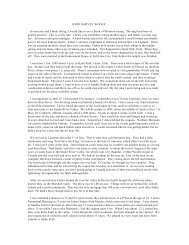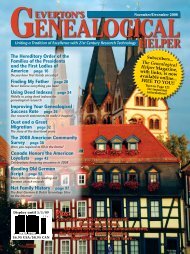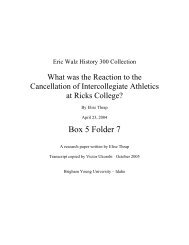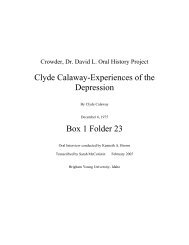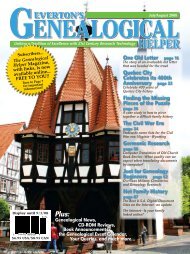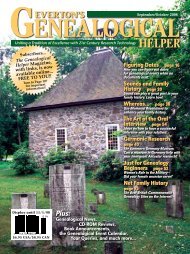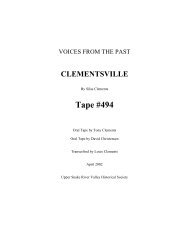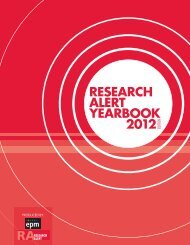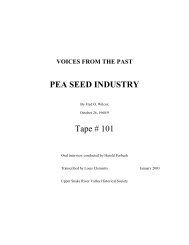HelPeR - BYU Idaho Special Collections and Family History
HelPeR - BYU Idaho Special Collections and Family History
HelPeR - BYU Idaho Special Collections and Family History
Create successful ePaper yourself
Turn your PDF publications into a flip-book with our unique Google optimized e-Paper software.
Left: Thistle Flower—Emblem of Scotl<strong>and</strong>. This<br />
shows ethnic identity. This person was born in<br />
Scotl<strong>and</strong>.<br />
Above: This stone shows the use of the word Consort.<br />
It also is an example of a gravestone listing the<br />
disease from which she died.<br />
for those that commissioned the stone. The stone<br />
carver used icons as a type of shorth<strong>and</strong>. Most carvers<br />
charged by the letter <strong>and</strong> anything that helped<br />
lessen the labor or expense of the project was welcomed.<br />
Millions of words have been written about<br />
the Christian religion. Not even a fraction of them<br />
could be carved on the average gravestone. The Western<br />
Cross, a widely recognized cultural symbol for<br />
Christianity, was placed on the stone representing<br />
the idea behind all those words.<br />
The person whose grave the stone was to adorn<br />
sometimes selected these icons in advance of death.<br />
Usually, however, the surviving family chose them.<br />
These carved icons or statuary, taken with epitaphs,<br />
scripture, <strong>and</strong> other carvings, can often provide insight<br />
into the nature of the person <strong>and</strong> his or her<br />
family. The use of all this information is a genealogy<br />
field <strong>and</strong> research tool called Cemetery Iconology.<br />
Your ancestor’s gravestone, its size, shape, <strong>and</strong><br />
even composition can often give you an insight into<br />
the culture in which your ancestor lived. Gravestones<br />
can yield information about ethnic identity, religious<br />
beliefs, <strong>and</strong> social organizations to which they may<br />
have belonged. You can find information about relationships.<br />
If you are searching for a female ancestor<br />
before the mid-1700s, a gravestone may be the only<br />
place you will ever find her name recorded. Gravestones<br />
often provide information about more than<br />
one ancestor, saving invaluable time on the part of<br />
the researcher. Gravestones often list information<br />
about your ancestor’s occupation, military service<br />
<strong>and</strong> even diseases <strong>and</strong> epidemics from which they<br />
may have died.<br />
Gravestone symbols or icons can give much information,<br />
but it is not as easy as looking at a picture<br />
<strong>and</strong> comparing it to your ancestor’s gravestone. Cemetery<br />
Iconology encompasses portions of the fields<br />
of Botany, Geology, <strong>History</strong>, <strong>and</strong> Sociology. We must<br />
consider the history, language <strong>and</strong> geography in the<br />
study of gravestone symbols. A symbol used <strong>and</strong><br />
recognized in one place may mean something different<br />
in another locality. We cannot attempt to read,<br />
analyze, <strong>and</strong> define gravestone icons through 21st<br />
century thinking <strong>and</strong> underst<strong>and</strong>ing. Medical terms<br />
have changed. Language <strong>and</strong> references to occupations<br />
may be quite different than what is understood<br />
The terms cemeteries <strong>and</strong> graveyards are used interchangeably, but there<br />
is a difference. Graveyards are burial places that have a connection to a<br />
church. Cemeteries are burial places that have no such connection.<br />
Ja n ua ry/Fe b r u a r y 2009 Ev e r t o n’s Ge n e a l o g i c a l He l p e r © 17



